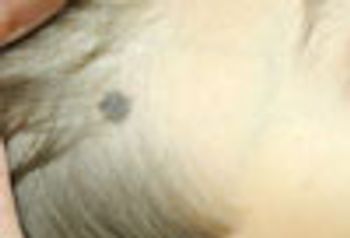
Melanoma in pre-adolescent children is extremely rare, but not totally unknown. Because this lesion had recently become larger and darker, the lesion was excised; histology confirmed a benign nevus.

Melanoma in pre-adolescent children is extremely rare, but not totally unknown. Because this lesion had recently become larger and darker, the lesion was excised; histology confirmed a benign nevus.
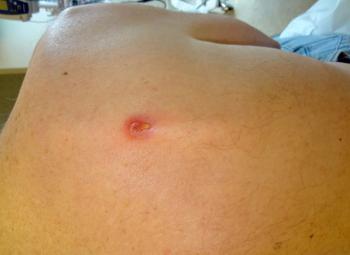
Which organism is the likely cause of this lesion? Can you pick up dx clues in this sonogram? Test your clinical skills here with this week’s 5-question quiz...

Is this lesion the result of an injury, as the boy’s mother suspected, or something else?
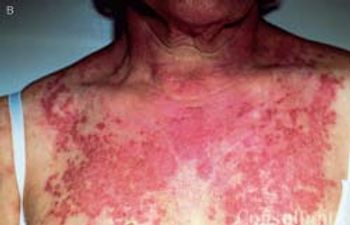
Images of guttate, small-plaque, and chronic plaque psoriasis; systemic lupus erythematosus; pityriasis rubra pilaris; and secondary syphilis.
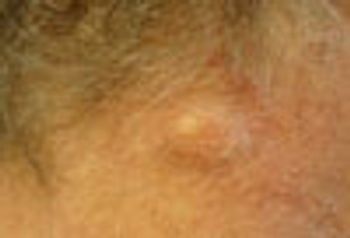
This nodule on the neck is a typical location and appearance for an epidermal cyst. If the cyst has never been inflamed or infected, it may be removable through a very small punch biopsy followed by lateral pressure or a small linear incision.
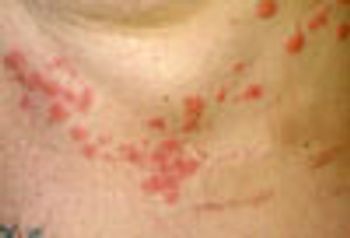
Does piercing have anything to do with these skin lesions? How best to determine the cause of a gradually enlarging neck mass? See how you do with this week's 5 quiz questions . . .
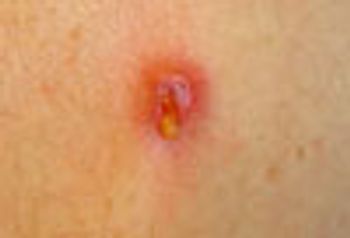
In the current milieu, the clinician should assume that MRSA is responsible for furuncles, until culture proves otherwise. Incision and drainage is the most important part of therapy, but oral antibiotics should be considered in large lesions, very young or very old patients, and when cellulitis surrounds the boil.
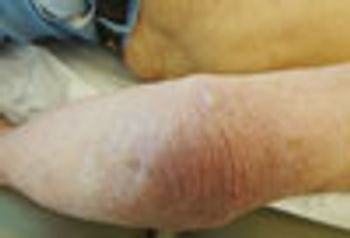
Given this patient's history, this wart might have been over-treated as a presumed squamous cell carcinoma had not a biopsy been obtained.
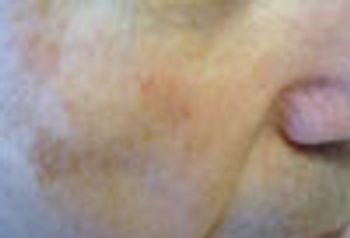
Some skin neoplasms are quite subtle and do not present as obvious exophytic lesions. This basal cell carcinoma presented as a subtle area of asymptomatic discoloration under the patient’s eye.

This is a classic case of herpes zoster. Note that the rash is limited to T5-6 dermatomes.
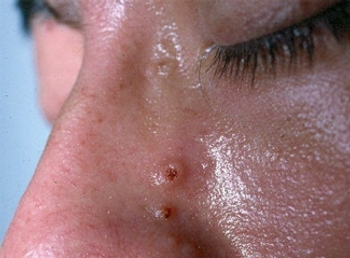
What disorder do these asymptomatic skin lesions and chest film findings point to in a homosexual man? Test your clinical skills in this week’s 5-question quiz.
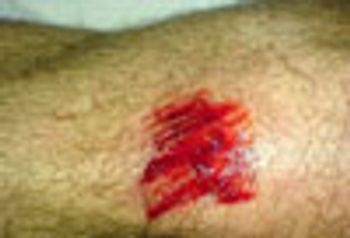
This biker asked that his wound be rinsed with hydrogen peroxide, which is now felt to be irritating to tissue and no longer recommended for use in rinsing out a traumatic wound. Water or saline is preferable. Also, superficial abrasions heal better when kept moist.
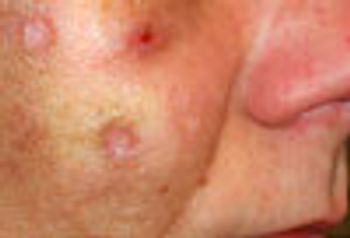
It is rare for acne of this severity to develop in normal, healthy adults. This picture strongly suggests patient manipulation of more minor lesions. When the clinical picture is unusual or improbable, always consider the possibility of factitious disease.
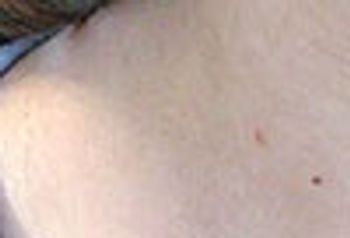
CT scan verified thyroid gland localization of this asymptomatic neck mass that proved to be papillary thyroid carcinoma on needle aspiration biopsy. Thyroidectomy confirmed the diagnosis of cancer.
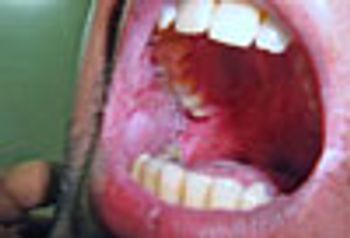
A 53-year-old man became concerned when ever-increasing numbers of painful oral lesions developed on the buccal mucosa and tongue. A bland diet did not help. What does this look like to you? Test your clinical acumen with this week's quiz questions.

CRPS is essentially a clinical diagnosis. Allodynia and hyperalgesia are notable criteria for the diagnosis for type 1 and type 2.
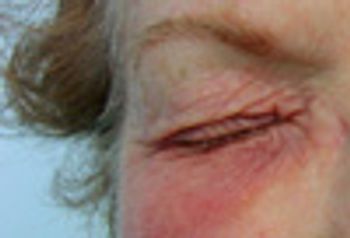
Images: Allergic contact dermatitis, seborrheic keratosis, dermatophytosis, oro-labial herpes simplex, hereditary trichoepithelioma
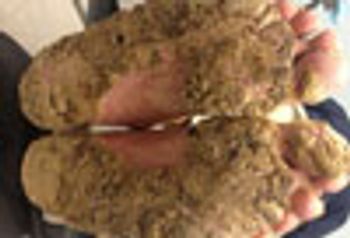
This is a classic keratoderma, which can be due to a variety of congenital defects in keratinization or acquired in association with disease states. Retinoids, systemic and topical, are the treatments of choice.
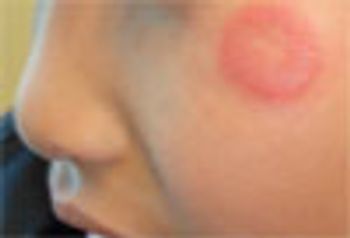
This solitary, very pruritic, annular lesion suggests dermatophytosis. KOH preparation verified the presence of Tinea faciei. This infection is usually associated with contact with a new kitten or puppy.
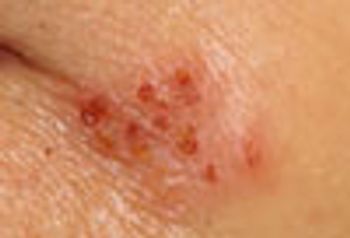
This clustered grouping of small, shallow erosions surmounting a slightly indurated plaque is characteristic for “cold sores.” Because no vesicles were present and the lesions appeared to be crusting over, the patient was advised to apply an OTC cream (docosanol 10%) per package insert instructions.

These small, pruritic papules appeared in the morning, which strongly suggests the bite of a nocturnal feeding arthropod. Insect bites arranged in clusters of 3 is typical for, but not diagnostic of, bedbug infestation.

This green discoloration is the result of subungual Pseudomonas aeruginosa colonization. Pathogenic bacteria can enter this space via many causes, including trauma or underlying lesions.

Guttate psoriasis often appears in conjunction with an upper respiratory infection, particularly streptococcal tonsillitis, as it did in this patient. This phenomenon is more common in children.

Xanthomata, foreign body aspiration, statin interactions, fingernail clubbing, benign papillary fibroelastoma. Test your skills with this week's 5-question quiz.

These oval, dyschromic macules surrounded by a palpable scale-like border are pathognomonic of disseminated superficial actinic porokeratosis, a disorder seen usually in those who have had considerable lifelong exposure to sunlight.